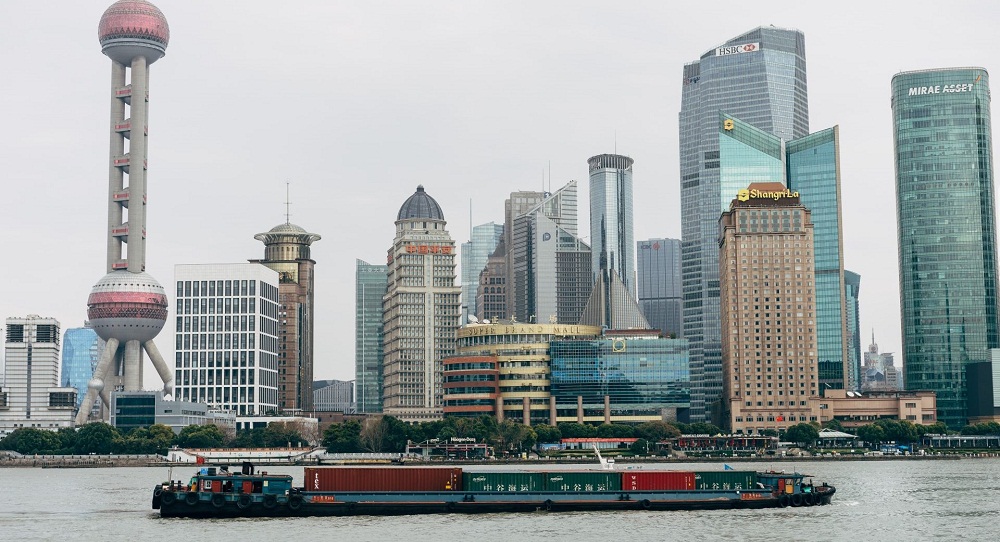The trade war between Washington and Beijing has cast a spotlight on China’s export juggernaut, a result of one of the most remarkable economic transformations in recorded history.
Under the administration of President Trump, the US has imposed, or plans to impose, tariffs on nearly all Chinese imports into the country – worth USD 539.7 billion in 2018 and accounting for 21.6% of all US imports.
The protectionist argument underlying these duties is that Chinese imports have destroyed the US manufacturing base by flooding the country with low-cost imports. Keep Chinese goods out, the argument goes, and factories will once again be humming with activity from Pittsburgh to Peoria.
The debate over trade carries high stakes for politicians, corporations and workers. Smart trade policy can create millions of new jobs and raise standards of living. At the same time, free trade comes with a cost, as uncompetitive factories shut their doors, a fact that workers in rural China and the US have painfully discovered. Getting it wrong would be a catastrophe. Runaway tariffs fostered the first Great Depression in the 1930s and could trigger a second one, say analysts.
Finding the right balance is tricky—and essential. As policymakers and political leaders sort out the best approach, it’s essential to keep a close eye on the data, which tells a story unvarnished by opinion.
“The narrative that China has gotten rich just by exporting to the US is incomplete,” says Don Brasher, president of Trade Data Monitor. “China has built markets all over the world.” The breadth of Chinese exports is one of the biggest lessons to draw from the data. In 2018, 117 countries imported at least a billion dollars’ worth of Chinese exports, and 38 nations imported at least USD 10 billion worth of Chinese goods, according to TDM data.
The first essential fact to draw from the numbers is the unprecedented scale and size of the Chinese export machine.
In 2000, China was the world’s sixth largest exporter of goods, shipping out USD 249.2 billion worth of goods, according to Trade Data Monitor (TDM), the world’s top source of trade data. By 2018, it led the world with almost USD 2.5 trillion worth of exports, a feat rivaling the economic empires of imperial Britain and the post-World War II US. Of those exports, roughly 19% went to the US, with Japan, South Korea, Vietnam, Germany and India rounding out the list of biggest importers of Chinese goods.

That trend is likely to continue as China pursues its Belt and Road Initiative by funding more ports, rail lines and roads, an initiative that includes over 65 countries, four billion people, and over USD 20 trillion in gross domestic product.
Another key to understanding the numbers is to look back farther than China’s joining the World Trade Organization in 2001, which politicians and analysts often focus on. Outsiders often neglect to consider the long arc of a country that boasts the second oldest continuous civilization in human history, trailing only ancient Egypt.
China started its current wave of economic modernization in the 1980s, a few years after the death of Mao Zedong in 1976, almost immediately triggering annual GDP growth rates over 10%, fueled initially by the rapid growth of the textile industry in Hebei, Hunan, Jiangsu and Shandong.
By the 1990s, China had become an important player in global trade talks and was looking to make deals. It found a willing customer in Washington, where the government was lobbied intensively by corporations chasing higher profit margins. It was US business interests, like Walmart, Nike and Apple, who pushed for the passing of the Uruguay Round of trade talks, concluding in 1994, and for China’s accession to the WTO in 2001. These consumer goods companies, typically owned by US and European shareholders, pursued a strategy of making their wares in China and exporting them to markets all over the world.
In the years following China’s accession to the WTO, roughly half of all its exports came from foreign-controlled companies and they penetrated markets all over the world. In Japan, for example, Chinese imports increased to 20% in 2006 from 16.5% in 2001, according to TDM data. In Australia, they increased to 14% from 9%. In the US, imports rose to 16% from 10%.

That growth has leveled off, but China’s rise is a reminder that, in a world with multiple economic superpowers, cooperation in global trade is more important than ever.
John W. Miller is an award-winning journalist and filmmaker who covered trade, mining and global economics as a foreign correspondent for the Wall Street Journal.
Trade Data Monitor ([email protected]) is a Geneva and Charleston, SC based supplier of import and export statistics from 111 countries


